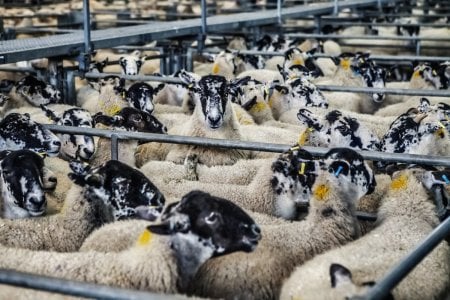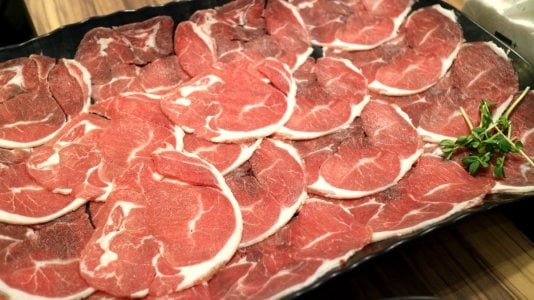Why is lamb still expensive if sheep prices are at an all-time low? Discover the shocking reason!
Australia, the world’s largest exporter of sheep meat, is currently experiencing a sheep surplus. With an estimated 79 million sheep across the country, farmers are facing the lowest prices in years.
This oversupply of sheep has led to a drop in prices for farmers and, according to experts, should result in lower prices for consumers. However, the reality is more complex than it seems.
The current sheep surplus is a result of favourable weather conditions over the past three years.
Higher than average rainfall has led to an abundance of grass, allowing farmers to feed and breed more sheep.
Since 2020, the national flock has grown by an astonishing 23 per cent. This is the largest number of sheep, both for meat and wool, in Australia since 2007.
However, this surplus has led to a significant drop in prices. Less than two years ago, prices for Australian sheep were at record highs.
Now, farmers are struggling to make ends meet, with some even resorting to killing their sheep on their farms rather than selling them due to the low returns.
The impact on consumers
Despite the low farmgate prices, consumers are yet to see a significant drop in the price of lamb at their local supermarkets and butcher shops.
According to Meat and Livestock Australia (MLA), retail lamb prices have only dropped 9.5 per cent since last year. This is despite the fact that about 70 per cent of the lamb produced in Australia is sold overseas.
The reason for this discrepancy lies in the complex supply chain of the meat industry. ‘Price flow from sale yard prices through to retail takes about eight months for both cattle and sheep,’ explained MLA spokesman Steve Bignell.
This means that even though farmers are currently selling their sheep at low prices, it will take several months for these savings to be passed on to consumers.
The challenges facing the industry
While the sheep surplus is a significant challenge for farmers, it is not the only issue they are facing.
Rising costs for fertiliser, interest rates, and trucking are putting additional pressure on farmers. At the same time, the meat processing industry is struggling with its own set of challenges.
The COVID-19 pandemic has disrupted the workforce, leading to a backlog in the processing of meat. This, combined with high operating costs and logistical issues, has resulted in a jam in the supply chain.
As a result, there is currently an influx of animals to be slaughtered, but it is taking time for the processors to catch up.
The future of the sheep industry
The current situation in the sheep industry is a stark reminder of the volatility of the agricultural sector.
While the sheep surplus is a temporary issue, it highlights the need for sustainable farming practices and a resilient supply chain.
In the meantime, consumers can expect to see a drop in lamb prices in the coming months.
However, this will depend on a range of factors, including weather conditions, global market trends, and the ability of the meat processing industry to overcome its current challenges.
The sheep industry is a vital part of Australia's economy, and its health is crucial for the livelihoods of thousands of farmers across the country.
As such, all stakeholders–-from farmers to processors to retailers—must work together to navigate these challenging times.

While the current sheep surplus in Australia is leading to lower prices for farmers, it will take time for these savings to be passed on to consumers.
In the meantime, understanding the complexities of the sheep industry can help consumers make informed decisions about their food purchases!
So what do you think of this story, members? Have you been eating more lamb lately? Tell us in the comments below.
This oversupply of sheep has led to a drop in prices for farmers and, according to experts, should result in lower prices for consumers. However, the reality is more complex than it seems.
The current sheep surplus is a result of favourable weather conditions over the past three years.
Higher than average rainfall has led to an abundance of grass, allowing farmers to feed and breed more sheep.
Since 2020, the national flock has grown by an astonishing 23 per cent. This is the largest number of sheep, both for meat and wool, in Australia since 2007.
However, this surplus has led to a significant drop in prices. Less than two years ago, prices for Australian sheep were at record highs.
Now, farmers are struggling to make ends meet, with some even resorting to killing their sheep on their farms rather than selling them due to the low returns.
The impact on consumers
Despite the low farmgate prices, consumers are yet to see a significant drop in the price of lamb at their local supermarkets and butcher shops.
According to Meat and Livestock Australia (MLA), retail lamb prices have only dropped 9.5 per cent since last year. This is despite the fact that about 70 per cent of the lamb produced in Australia is sold overseas.
The reason for this discrepancy lies in the complex supply chain of the meat industry. ‘Price flow from sale yard prices through to retail takes about eight months for both cattle and sheep,’ explained MLA spokesman Steve Bignell.
This means that even though farmers are currently selling their sheep at low prices, it will take several months for these savings to be passed on to consumers.
The challenges facing the industry
While the sheep surplus is a significant challenge for farmers, it is not the only issue they are facing.
Rising costs for fertiliser, interest rates, and trucking are putting additional pressure on farmers. At the same time, the meat processing industry is struggling with its own set of challenges.
The COVID-19 pandemic has disrupted the workforce, leading to a backlog in the processing of meat. This, combined with high operating costs and logistical issues, has resulted in a jam in the supply chain.
As a result, there is currently an influx of animals to be slaughtered, but it is taking time for the processors to catch up.
The future of the sheep industry
The current situation in the sheep industry is a stark reminder of the volatility of the agricultural sector.
While the sheep surplus is a temporary issue, it highlights the need for sustainable farming practices and a resilient supply chain.
In the meantime, consumers can expect to see a drop in lamb prices in the coming months.
However, this will depend on a range of factors, including weather conditions, global market trends, and the ability of the meat processing industry to overcome its current challenges.
The sheep industry is a vital part of Australia's economy, and its health is crucial for the livelihoods of thousands of farmers across the country.
As such, all stakeholders–-from farmers to processors to retailers—must work together to navigate these challenging times.
Key Takeaways
- Australia’s sheep population has grown by 23 per cent since 2020 due to favourable rainfall and farming conditions.
- Prices of lamb have fallen significantly—nationally, retail lamb prices have dropped 9.5 per cent since last year, and lamb consumption has increased by about 14 per cent.
- The fall in sheep prices puts farmers in a difficult position, with many choosing to kill their sheep on the farm rather than sell them due to the high costs of transportation versus low return prices.
- Despite the meat oversupply, meat processors are struggling due to high operating costs and complications caused by the COVID-19 pandemic, resulting in a backlog in the slaughter and processing of animals.
In the meantime, understanding the complexities of the sheep industry can help consumers make informed decisions about their food purchases!
So what do you think of this story, members? Have you been eating more lamb lately? Tell us in the comments below.
Last edited by a moderator:









